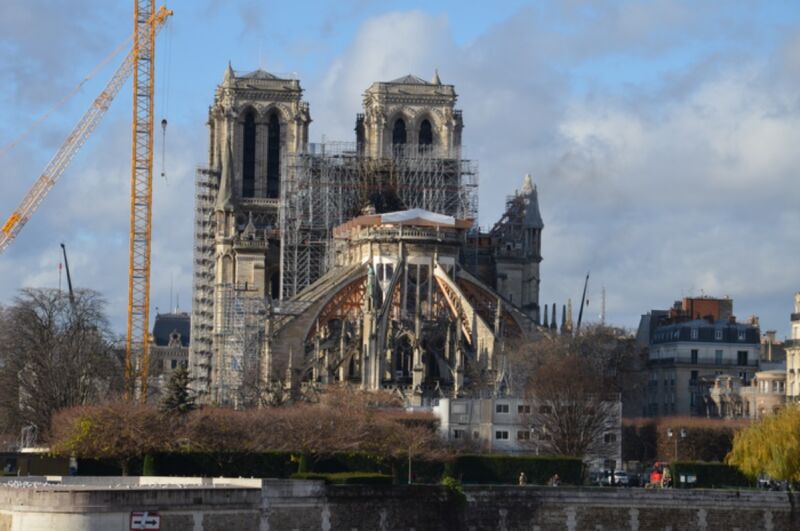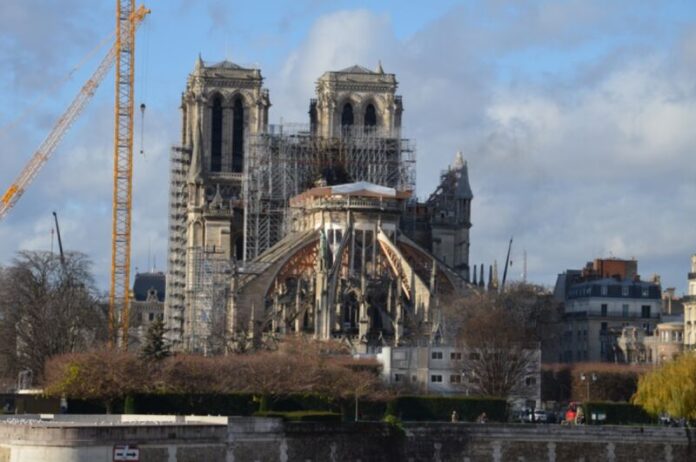
Enlarge / The Notre-Dame de Paris has been under restoration since a devastating fire destroyed the main spire and roof in April 2019. (credit: Maxime L'Héritier/CC-BY 4.0)
There's rarely time to write about every cool science-y story that comes our way. So this year, we're once again running a special Twelve Days of Christmas series of posts, highlighting one science story that fell through the cracks in 2023, each day from December 25 through January 5. Today: The Notre Dame cathedral in Paris has been undergoing extensive renovation in the wake of a devastating 2019 fire. Previously hidden portions of its structure have revealed the use of iron reinforcements in the earliest phases of the cathedral's construction, making it the earliest known building of its type to do so.
On April 15, 2019, the world watched in collective horror as the famed Notre Dame cathedral in Paris was engulfed in flames. The magnificent cathedral's roof and its support structure of 800-year-old oak timbers were destroyed when the main spire—750 tons of oak lined with lead—collapsed in flames, landing on the wooden roof. French President Emmanuel Macron vowed to rebuild the cathedral, and that work has continued steadily in the ensuing years; the current planned re-opening will occur on December 8, 2024.
If there is a silver lining to the destruction, it's that the damage has revealed parts of the cathedral's structure that were previously inaccessible, telling archaeologists and conservationists more about the materials originally used to construct Notre Dame in the mid-12th century. According to a March 2023 paper published in the journal PLoS ONE, the original builders used iron reinforcements during the initial phases, making Notre Dame the earliest building of its type to do so.
Read 9 remaining paragraphs | Comments
Ars Technica - All contentContinue reading/original-link]




